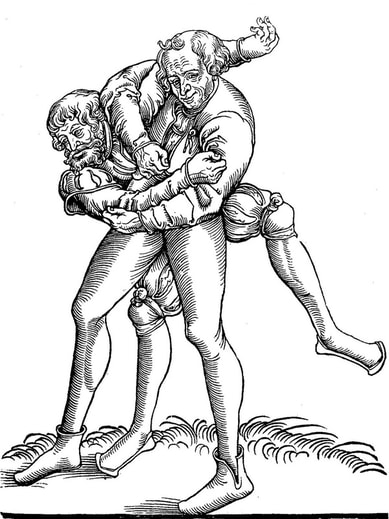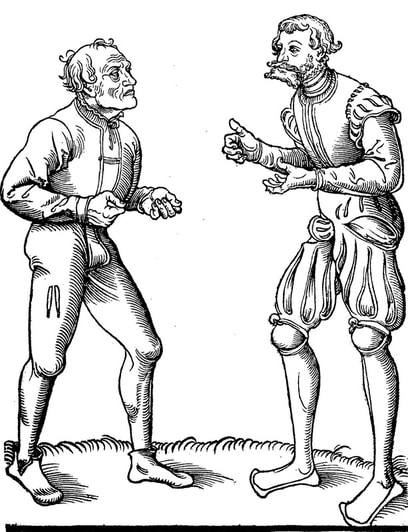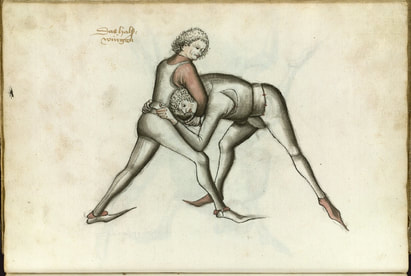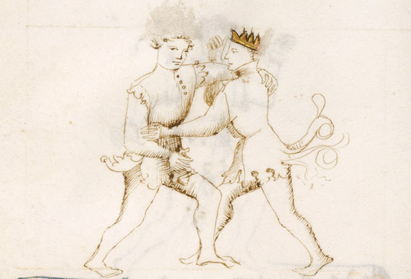WRESTLING

Both are concerned with unarmed combat in general, however many of the grappling techniques are also used as part of swordsmanship.
The German tradition has records of a number of Master-Ringer of the 15th to 16th centuries specialising in unarmed combat, such as Ott Jud (Ott the Jew).
Unarmed combat was divided in two categories, sportive grappling or geselliges ringen and serious unarmed combat or kampfringen (literally ‘fight-wrestling).
While friendly grappling had fixed rules that prohibited dangerous techniques and usually began in a grappling hold, ending with a throw or submission, kampfringen included techniques intended to injure, permanently disable or kill.
Punches, joint-locks, elbow strikes, arm-breaking, neck-cranks, chokeholds, headbutts and kicks were taught.
The same is true of the wrestling tradition in what is now Italy, with the best example of the period being recorded in Fiore Furlan dei Liberi’s masterwork Fior di Battaglia, written in 1409.
Our primary sources for wrestling are:
MS Ludwig XV 13: Fior di Battaglia (The Flower of Battle) written by Fiore Furlan dei Liberi c.1409, but with cross-reference to three other surviving versions each containing variations in text, layout and content
Codex 44.A.8 (commonly called the Codex Danzig) compiled anonymously in 1452 and often attributed to the German fight-master Peter von Danzig and featuring the wrestling of Andres Liegnitzer
Ms.I.33 (known as the Walpurgis Fechtbuch), believed to be the oldest existing fight-manual in Europe and written c.1295



Find medieval combat sources and much more by visiting the excellent Wiktenauer HEMA resource portal